Architectural whim with animals
Oil on canvas, 57.5 x 74 cm
Frame cm 76 x 93
The examined canvas is to be referred to a follower of Nicolaes Berchem, a Dutch artist born 1620, son of the still life painter Pieter Claez, from whom he received the first rudiments of painting. His training and his painting are deeply linked to Italy, the country where he travelled and studied; a first trip must be before 1642, a period in which his presence is documented in the Guild of Saint Luke of Haarlem, one of the most important artists' guilds in Flanders and the Netherlands, particularly active in the Baroque period; among its members we can mention the likes of Rubens, Vermeer, Rembrandt, Antoon Van Dick, Pieter Bruegel. After a second Italian stay between 1653-1656 he settled permanently in Amsterdam. His production focuses on port landscapes, ruins, Roman landscapes and landscapes with a pastoral background, as in the work in question. His style is strongly influenced by the Italian stays and is characterized by a definition of ideal rural environments, hilly or mountainous depending on the case, enriched by human and animal figures (he was also an engraver and his studies on animals had considerable importance).
The painting is characterized by a delicate, lyrical atmosphere with warm tones, at the same time lively and present. In the rich and balanced composition, the landscape is rendered with great attention to detail and light while the slight nuance and attenuation of colors in the distance makes the sense of a delicate depth. The figures are rendered with care of detail and attention to pose and actions. They seem caught in a real moment, the moment the action is happening. The warm tones and the refined tonal passages, immersed in this particular light, give the work an atmosphere in which time seems to have stopped.


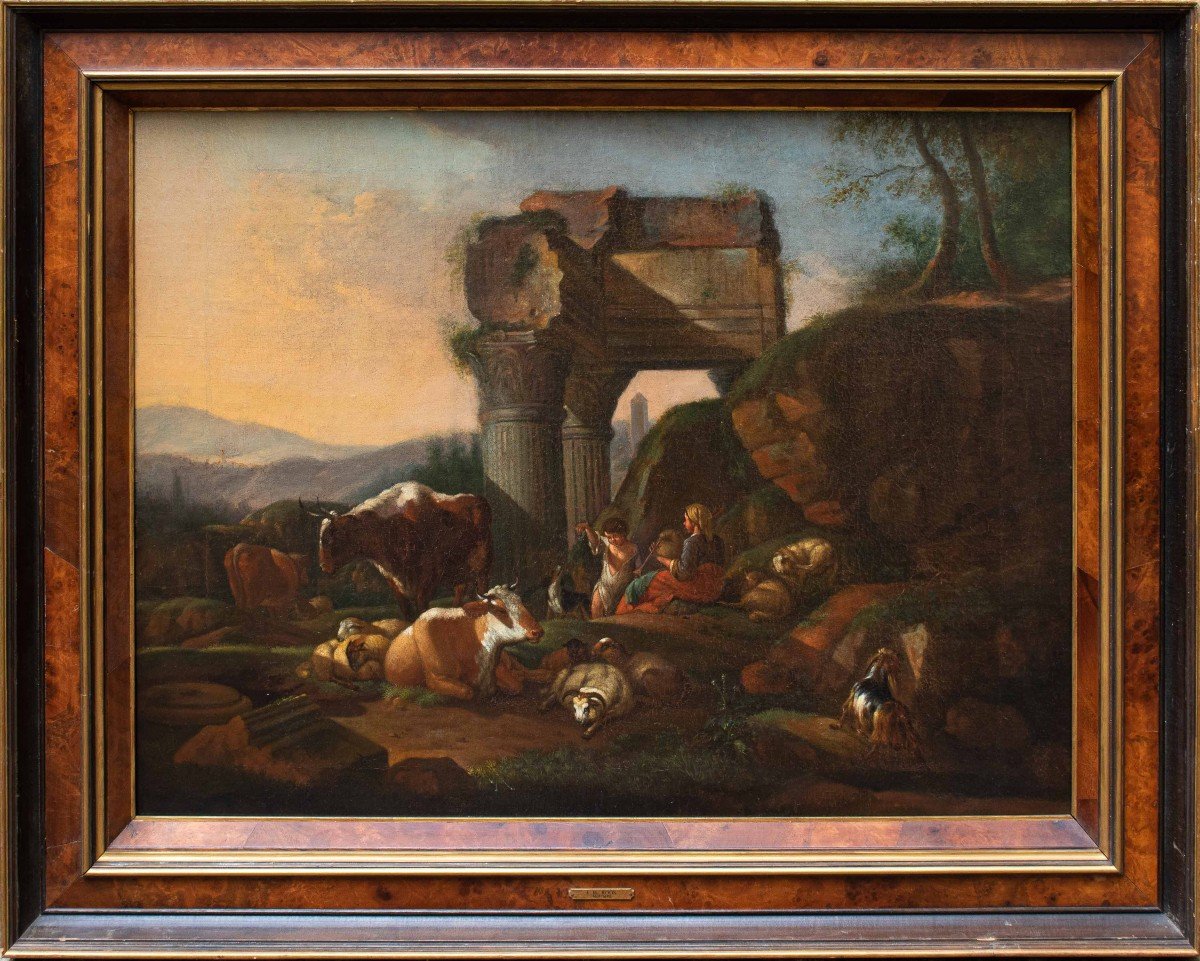
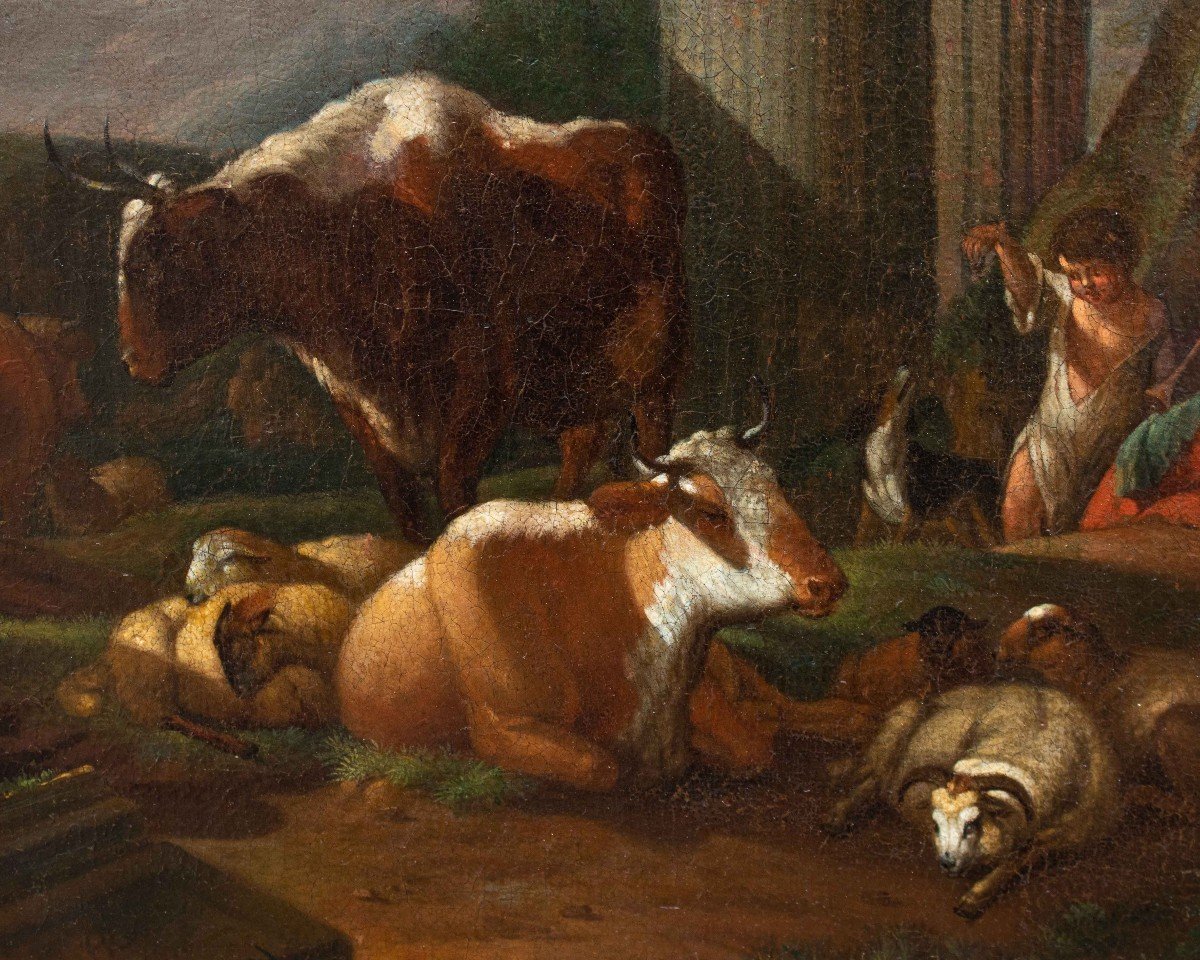
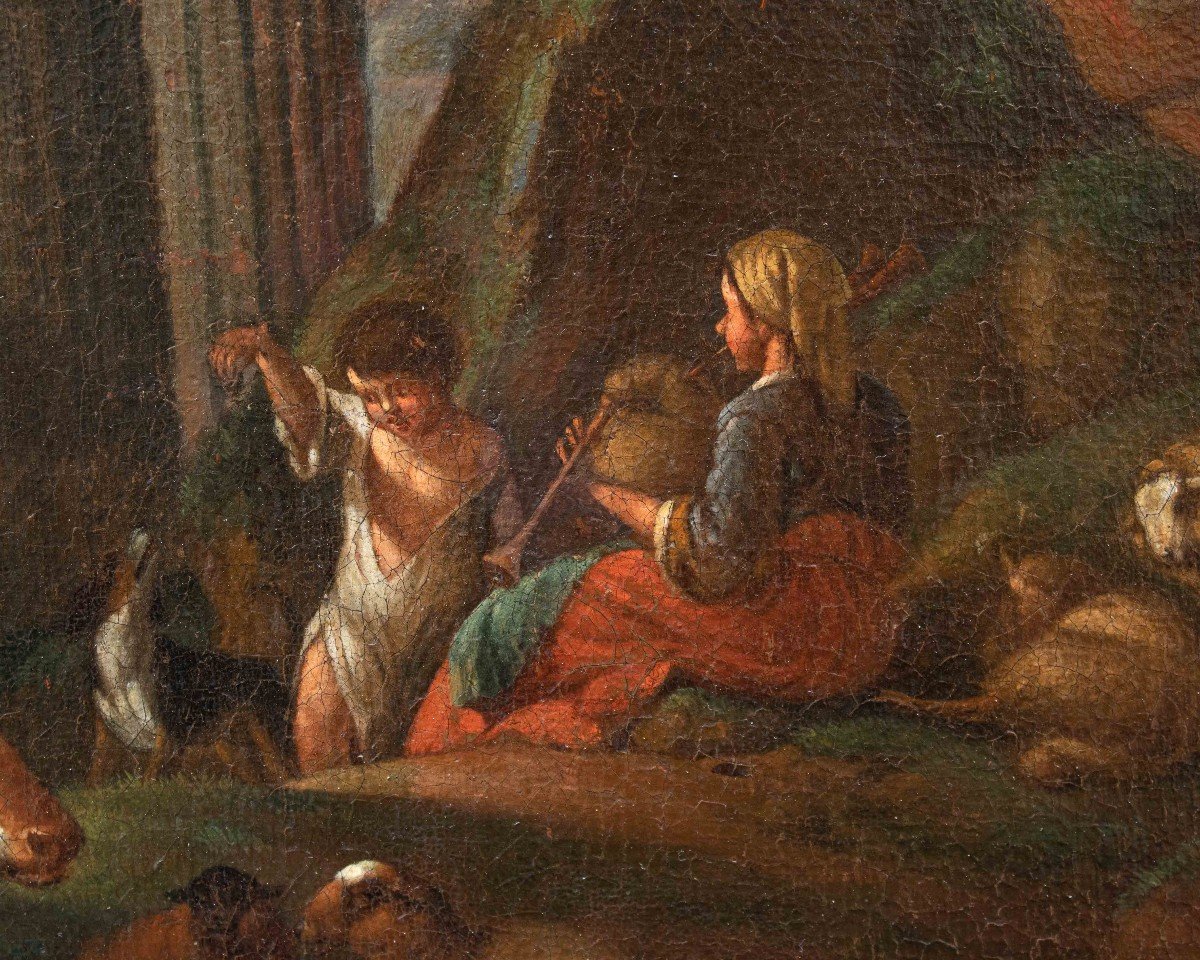
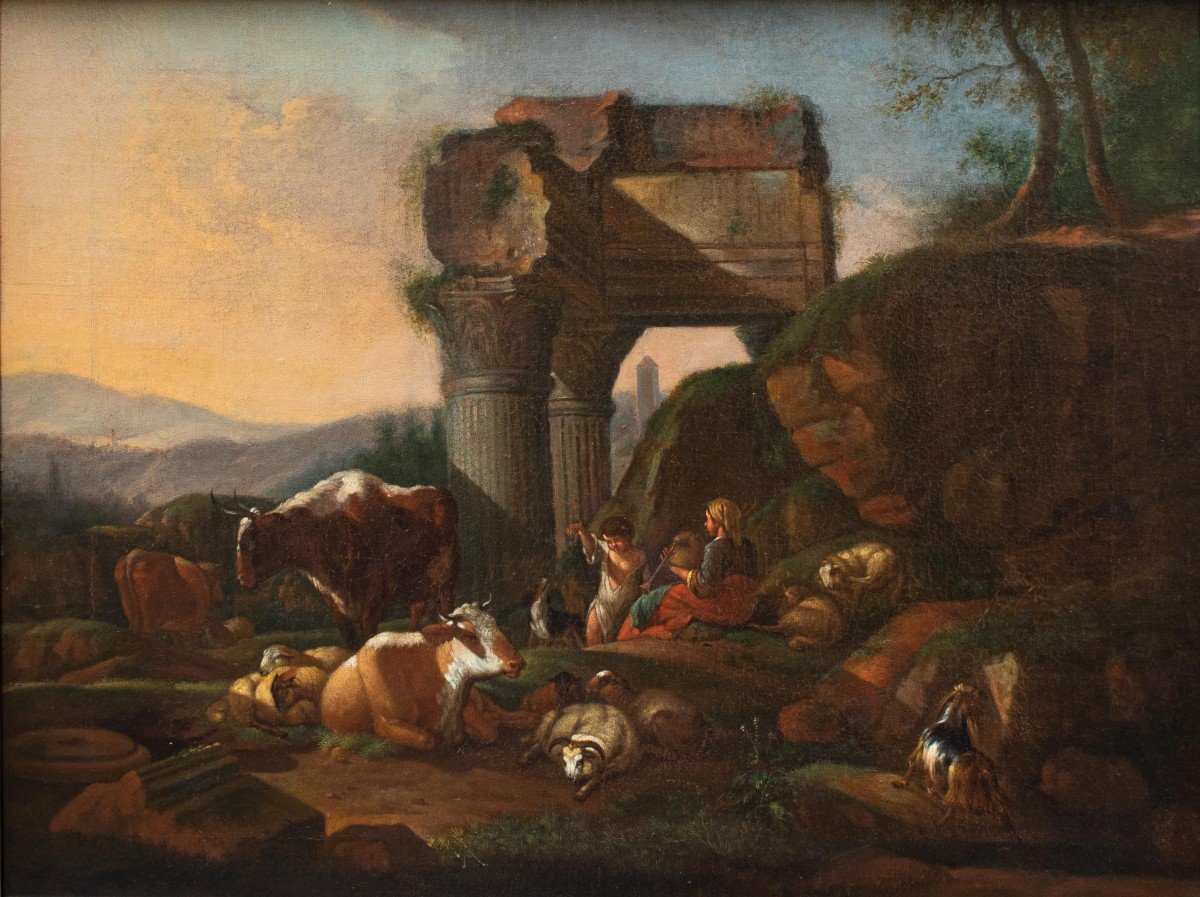
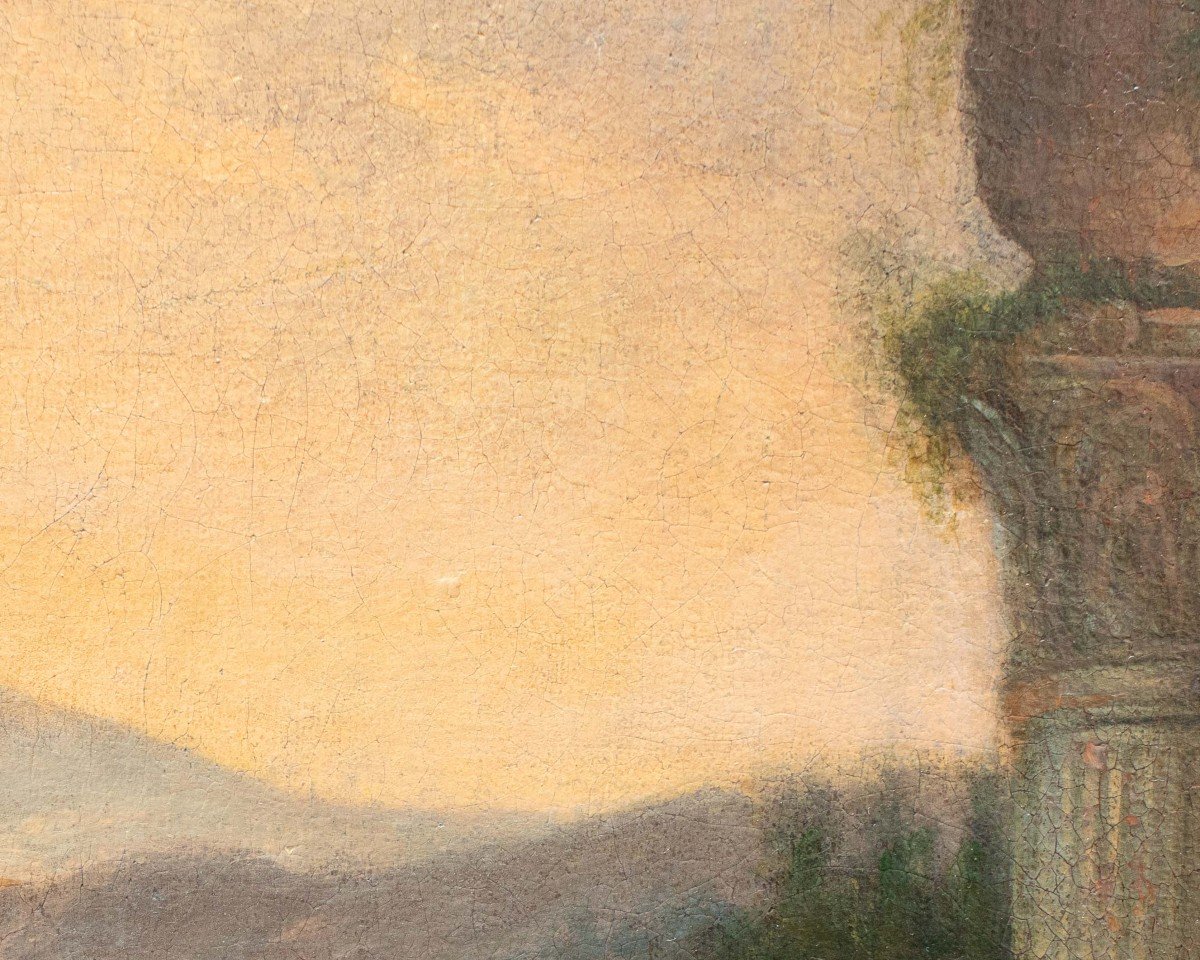
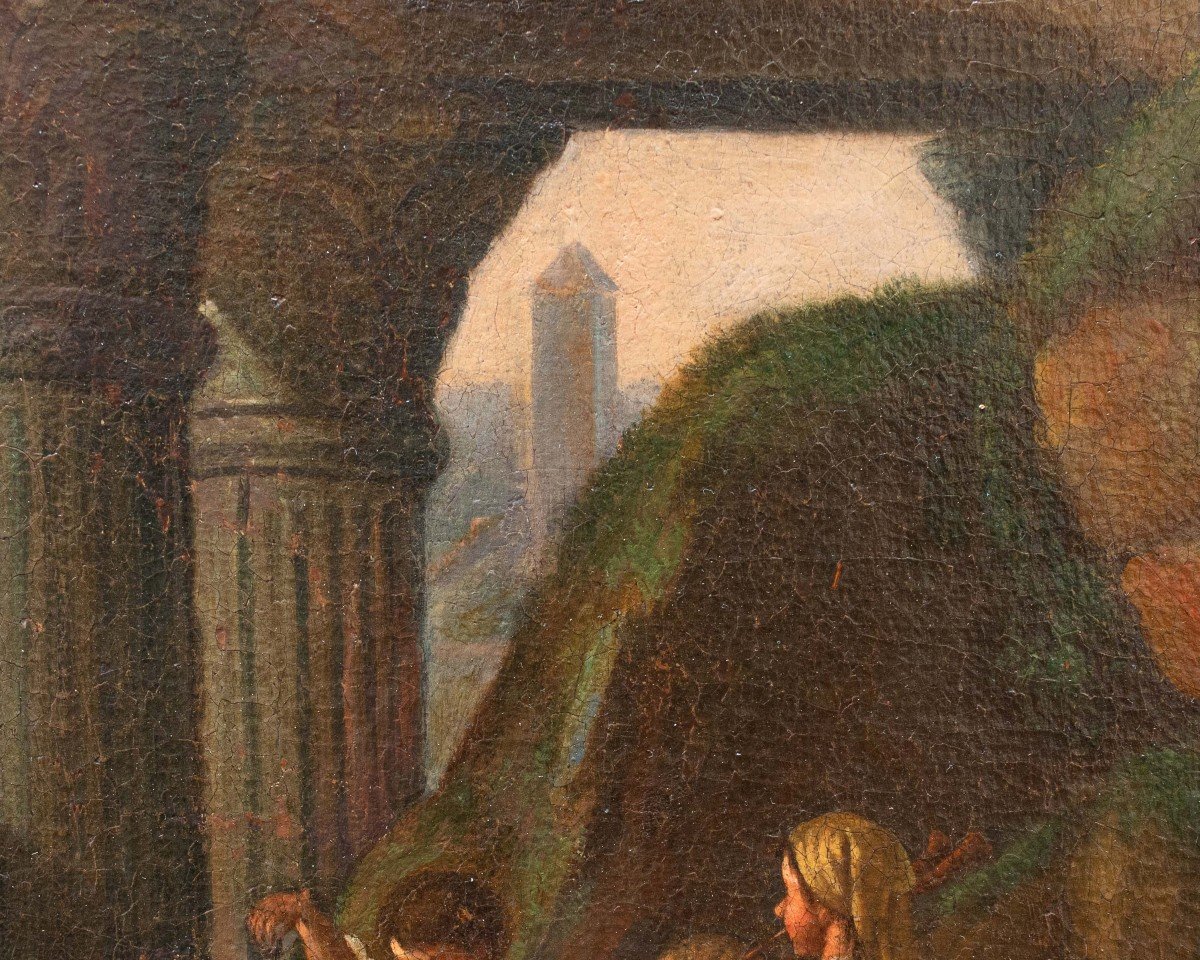
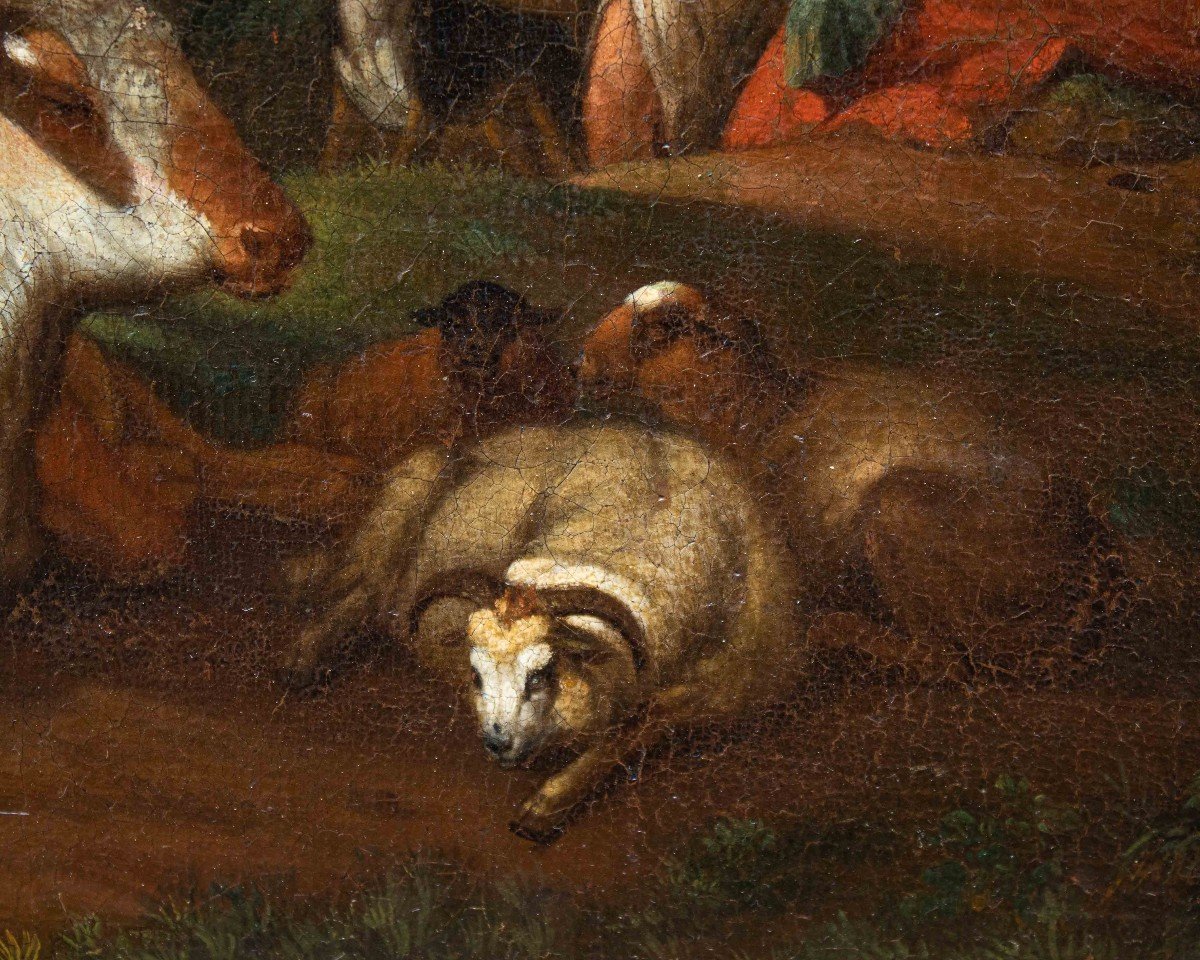
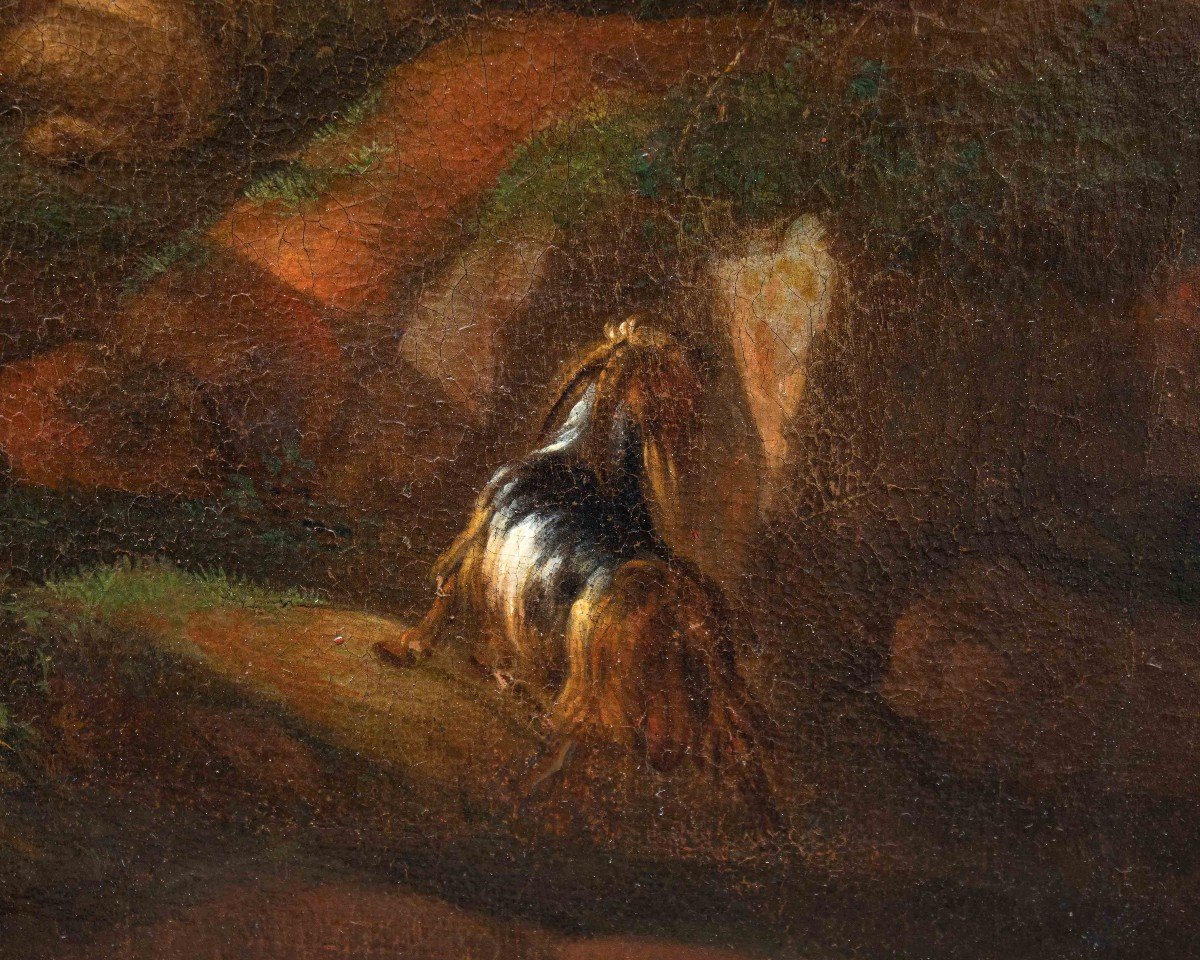
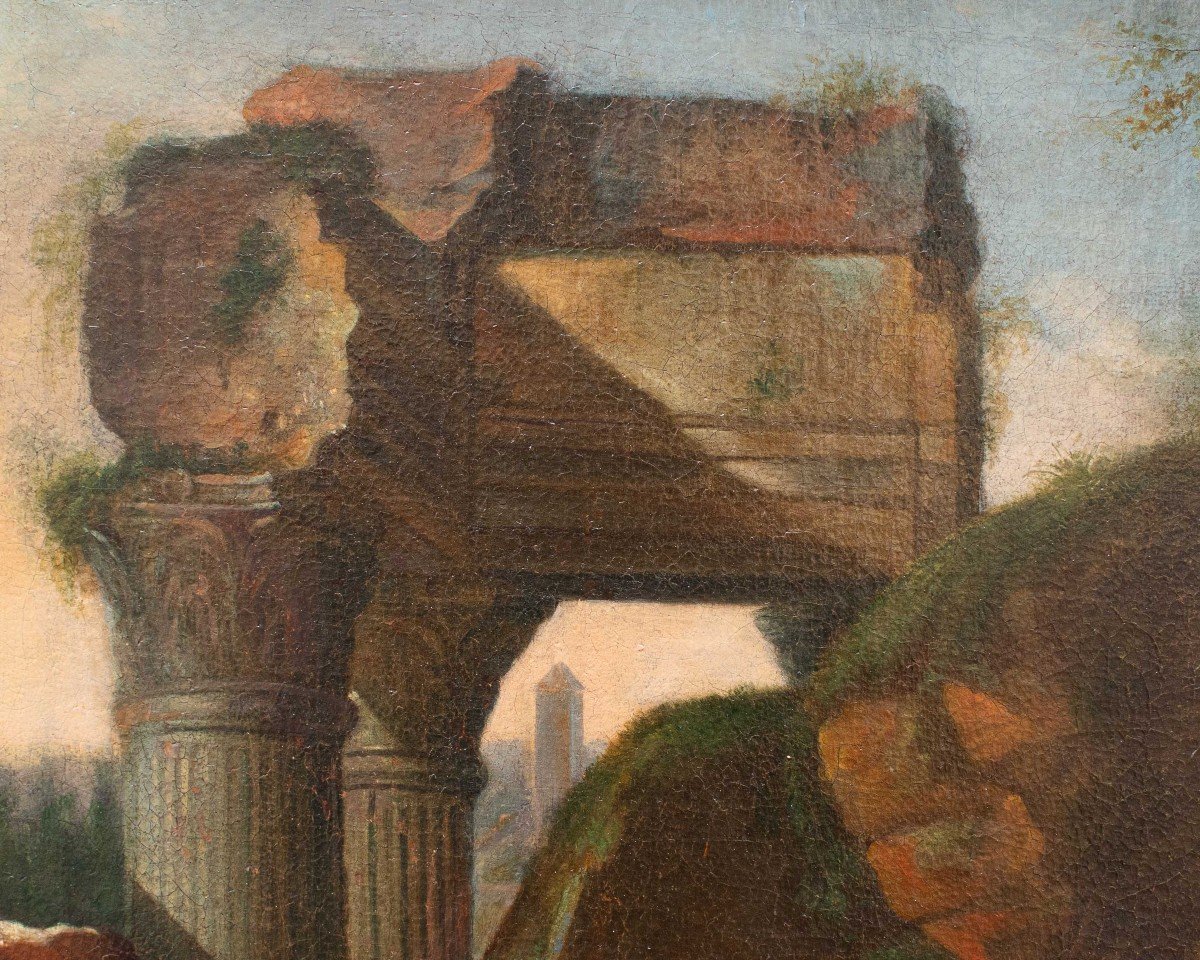













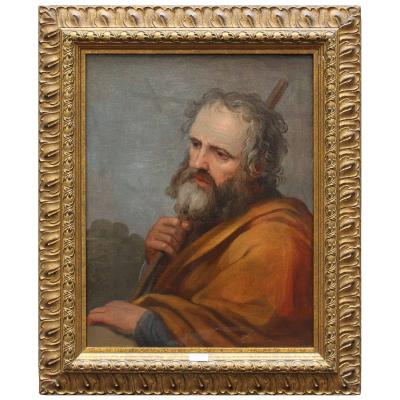



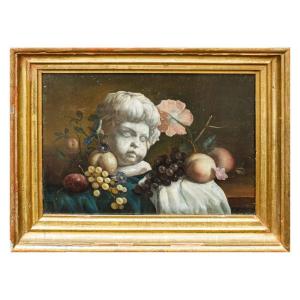









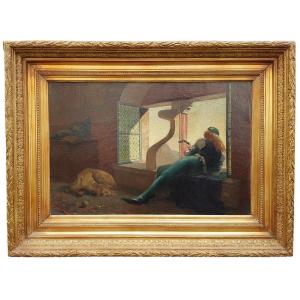
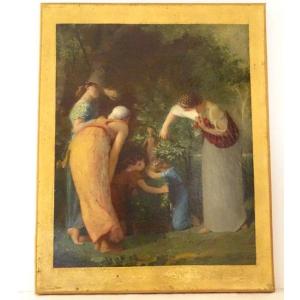




 Le Magazine de PROANTIC
Le Magazine de PROANTIC TRÉSORS Magazine
TRÉSORS Magazine Rivista Artiquariato
Rivista Artiquariato